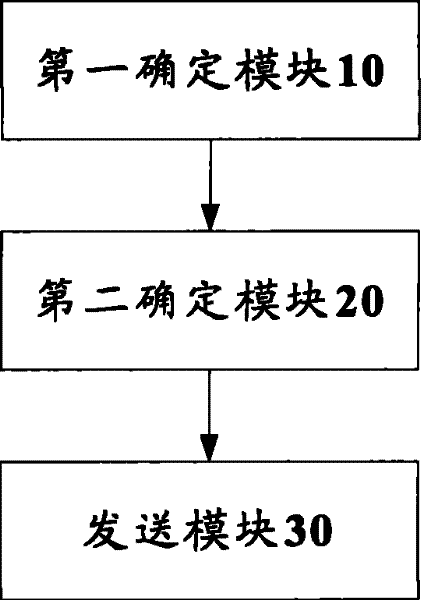Synchronous signal sequence sending method and device
A technology for synchronizing signals and sending methods, which is applied in the field of communication, can solve problems such as complex implementation methods, and achieve the effect of meeting the needs of upgrades
- Summary
- Abstract
- Description
- Claims
- Application Information
AI Technical Summary
Problems solved by technology
Method used
Image
Examples
Embodiment Construction
[0023] Functional Overview
[0024] Since the transmitting end only sends the synchronization signal sequence to the receiving end on the center frequency of each carrier frequency, the receiving end only receives the synchronization signal sequence centered on the frequency sweep point. If the center frequency of a certain carrier frequency is not on the frequency sweep point, Then the receiving end cannot receive the synchronization signal sequence sent by the transmitting end. According to existing standards and methods, if the carrier frequency of the receiving end is greater than 20MHz, it cannot be guaranteed that the center frequency of each carrier frequency of the receiving end is on the frequency sweep point, which will cause the receiving end to fail to correctly receive the synchronization signal sequence sent by the transmitting end. Based on this, the main idea of the present invention is: without modifying the existing standards, by changing the position where...
PUM
 Login to View More
Login to View More Abstract
Description
Claims
Application Information
 Login to View More
Login to View More - R&D
- Intellectual Property
- Life Sciences
- Materials
- Tech Scout
- Unparalleled Data Quality
- Higher Quality Content
- 60% Fewer Hallucinations
Browse by: Latest US Patents, China's latest patents, Technical Efficacy Thesaurus, Application Domain, Technology Topic, Popular Technical Reports.
© 2025 PatSnap. All rights reserved.Legal|Privacy policy|Modern Slavery Act Transparency Statement|Sitemap|About US| Contact US: help@patsnap.com



